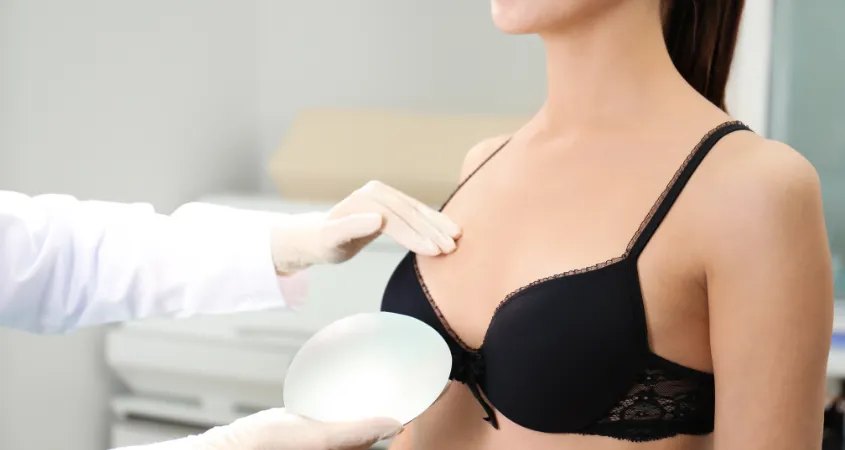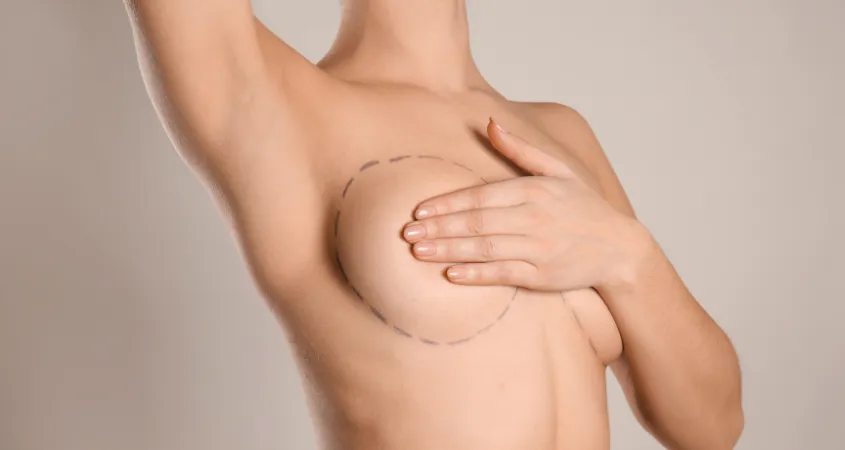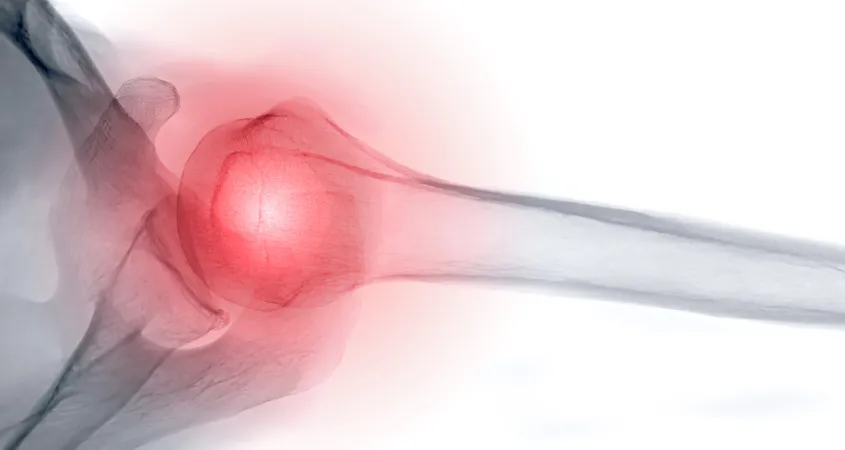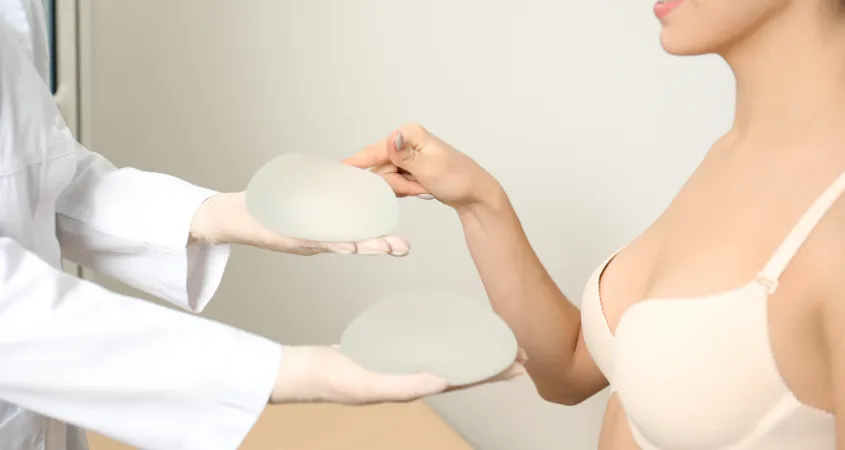Should You Have Transaxillary Breast Augmentation: Pros, Cons and Alternatives
By Partington Plastic Surgery on February 20, 2024 in Breast Augmentation

Introduction to Transaxillary Breast Augmentation
To place breast implants with this approach, a breast augmentation transaxillary incision is made in the axilla, the area under the breasts, in an effort to leave as few visible scars as possible. It is crucial to recognize that transaxillary breast augmentation frequently results in visible scars in the body in the underarm region, despite the fact that it may seem alluring to patients who are concerned about scarring on the breast.
Furthermore, using this procedure may make it more difficult to position implants accurately and increase the risk of issues such as implant misalignment. Because of these potential drawbacks, while advising patients regarding their surgical options, plastic surgeons and women’s health specialists should carefully assess the clinical and aesthetic outcomes of transaxillary breast augmentation surgery.
Understanding Transaxillary Breast Augmentation
What is Transaxillary Breast Augmentation?
A question arises: “what is transaxillary breast augmentation?” Utilizing an incision made in the axilla, the natural fold of the armpit, breast implants are inserted during a transaxillary endoscopic breast augmentation treatment in cosmetic plastic surgery.
Patient should be aware that this procedure frequently results in prominent scars in the underarm area. In order to insert and put the implant, a precise opening must be made from the armpit to the breast pocket.
The underarm area may still have obvious scarring that detracts from overall appearance even with endoscopic assistance employed to ensure proper implant insertion and prevent tissue injury. It is also less of a favored alternative for some individuals due to the technical demands of the procedure and the slight increase in the possibility of issues like implant misplacement.

Thus, to determine the best surgical strategy, plastic surgeons and patients must carefully weigh the drawbacks of breast augmentation transaxillary.
Who is a Candidate for Transaxillary Breast Augmentation?
Patients who would like to avoid visible scars on the breast itself often choose this approach. The best candidates for transaxillary breast augmentation are those with great general health and reasonable expectations for the outcome of the surgery. The breast region should have sufficient tissue to cover up the implant and the surgery.
Furthermore, applicants must not have any underlying medical conditions that could make treatment more difficult or impede the healing process. For most patients, who may not be a good candidate for periareolar incisions due to smaller areolas or who prefer a less invasive entrance point than inframammary procedures, this approach is very helpful.
Drawbacks of Transaxillary Breast Augmentation
Despite leaving little scarring on the breast, transaxillary breast augmentation has significant drawbacks that should be carefully considered by plastic surgeons and potential patients.
One major problem is that the surgical site is hard to see and hard to reach, making it difficult to place the implants precisely where they should be. This procedure increases the risk of implant misalignment and asymmetry because it creates a tunnel-like passageway from the breast to the armpit.
Furthermore, because a significant amount of axillary dissection is required, the transaxillary breast augmentation approach may need a longer recovery period. This could lead to more discomfort following surgery as well as a higher chance of issues including nerve injury and infection.
Ensuring that the advantages of this procedure balance the potential risks requires careful preoperative planning and patient counseling.
Benefits of Transaxillary Breast Augmentation
Notwithstanding its inherent challenges, transaxillary breast augmentation presents unique benefits that may accommodate certain patient preferences.
People who want to avoid visible scars on their breast area might find this choice particularly appealing, which could lead to a higher level of satisfaction with the final aesthetic. Additionally, this technique can improve the nipple-areolar complex’s preservation, guaranteeing the preservation of sensation and functionality.

But given the significant drawbacks — such as limited visibility during the procedure, potential for asymmetry, and protracted transaxillary breast augmentation recovery time, as transaxillary breast augmentation recovery ranges from one to two weeks — it is crucial to carefully weigh these benefits. It is important to have in-depth discussions with a board-certified plastic surgeon before coming to a choice. These talks will give a thorough grasp of the advantages and possible risks related to this process.
24-Hour Recovery After Breast Augmentation Technique at Partington Plastic Surgery
Introduction to the 24-Hour Recovery Technique
Patients at Partington Plastic Surgery benefit from a significantly faster recovery period because of the 24-Hour Recovery After Breast Augmentation method, which is a noteworthy increase in post-operative care. In order to facilitate a speedy recovery and minimize downtime, this innovative approach combines precision surgical procedures with contemporary pain management techniques.
This operation aims to reduce inflammation and tissue damage by using anesthetic measures along with state-of-the-art surgical techniques. Patients can therefore usually resume their regular activities one day following the procedure. In order to enhance patient outcomes and happiness, plastic surgeons should give top priority to implementing cutting-edge methods.
In contrast, patients have benefits like reduced discomfort, a quicker return to normal activities, and an overall better surgical experience. By taking this strategy, Partington Plastic Surgery not only raises the bar for breast augmentation recovery but also demonstrates its commitment to setting the standard for patient-centered care.
Natural Look
Confident Beauty
24 Hour Rapid Recovery, Muscle Sparing.

Benefits of the ON TOP Technique
From a medical perspective, ON TOP Breast Augmentation has many benefits, which makes it an advantageous procedure for doctors as well as patients. Because of this strategy, which places an emphasis on situating implants above the pectoral muscle, recovery time following surgery is significantly reduced, as is the level of discomfort.

By avoiding harm to their muscles, patients can reduce their pain and heal more rapidly, getting back to their regular activities sooner. Furthermore, by minimizing the likelihood of implant movement or distortion during muscle contraction, this technique maintains the augmentation’s aesthetic appearance.
Medical professionals can perform a more efficient surgical treatment with fewer complications and operative time when they use the ON TOP method over traditional breast augmentation. Because the ON TOP Breast Augmentation procedure reduces recovery barriers and produces natural-looking results, it is an effective cosmetic surgery option that increases patient satisfaction.
Comparison of transaxillary breast augmentation and ON TOP method
Plastic surgeons and those interested in cosmetic surgery should understand the major differences between the ON TOP method and transaxillary breast augmentation. Transaxillary breast augmentation before and after comparison alone often results in visible scars and can present challenges for precise implant placement because it involves making an incision in the armpit. Because this technique involves an indirect route to the breast tissue, there is also an increased risk of complications such as asymmetry and nerve injury.
On the other hand, there are several advantages to the ON TOP approach, which places the implant above the muscle, including reduced scarring, simpler implant placement, and a quicker surgical time. This method shortens the recovery period and reduces surgical pain in addition to improving the visual results.
Transaxillary breast augmentation surgery has historically been a popular option, but because of its drawbacks, and including transaxillary breast augmentation cost, the ON TOP technique is a better option in a variety of clinical settings, offering better accuracy and patient satisfaction.
Conclusion
Recap of Pros and Cons
The choice between transaxillary breast augmentation and the ON TOP method ultimately comes down to a thorough evaluation of the benefits and drawbacks of each procedure. If a patient wants to keep the nipple-areolar complex intact and has minimal scarring, transaxillary breast augmentation is a good option.

However, the challenges posed by this course of treatment—such as limited vision and a higher risk of asymmetry — must not be overlooked. Nonetheless, the ON TOP technique distinguishes itself with its quicker recuperation period, less discomfort following surgery, and more precise implant positioning. This makes it a desirable choice for people who value getting back to their regular habits quickly and looking excellent from a cosmetic standpoint.
Patients must have in-depth discussions with skilled plastic surgeons as their cosmetic surgery procedure advances in order to make selections that are informed and fit their individual wants and expectations.
Final Considerations for Potential Patients
To get the best possible outcomes from a breast augmentation, patient education, and personalized guidance must be given top priority. By having a thorough discussion about various techniques, potential dangers, and reasonable expectations, surgeons may help patients make selections that align with their cosmetic goals and lifestyle needs. This all-encompassing strategy not only empowers patients but also fosters confidence in the surgical process.
In addition, advances in surgical methods — like the ON TOP procedure — are constantly changing the landscape of cosmetic surgery, underscoring the importance of fusing medical expertise with creative thinking. As the field develops, providing excellent patient care and achieving the best surgical outcomes will require constant learning and flexibility.
Return to Overview